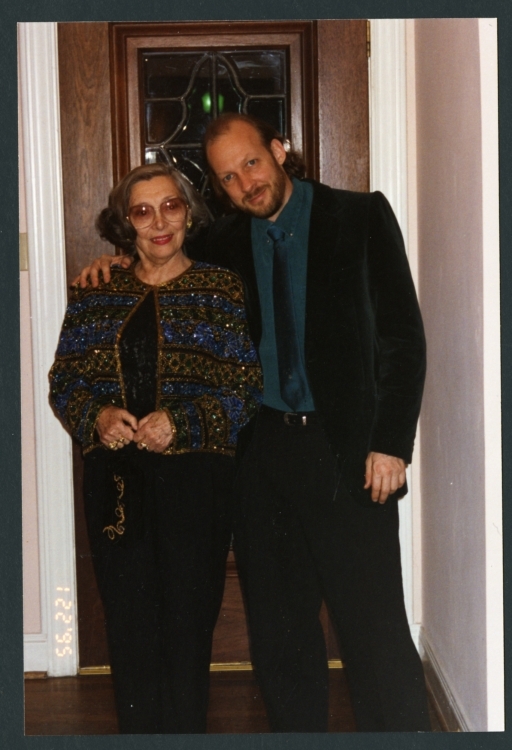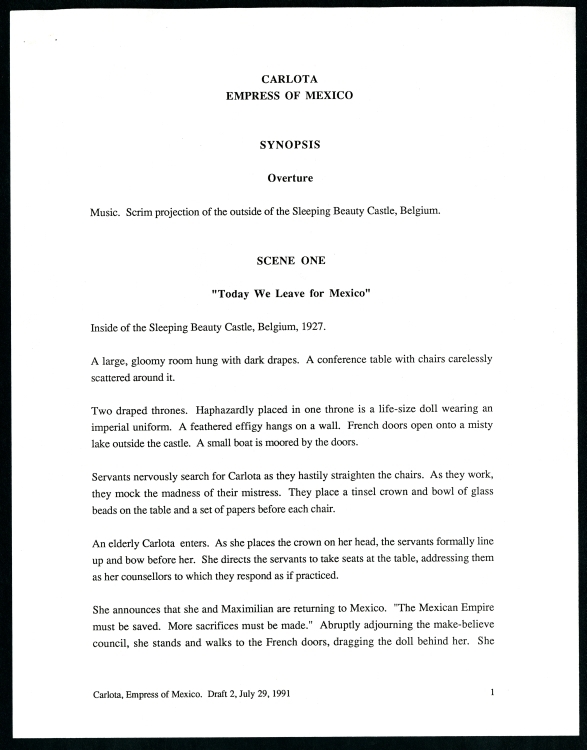Libretto
Written in the Spanish language, Carlota was conceived as a seven-scene opera, which derived its inspiration from the events and tragic life of the demented widow of Mexico's Emperor Maximilian, who was deposed and executed by firing squad in 1867. His wife, the Empress Carlota, lived an additional sixty years in solitude and complete denial of what happened.
Robert Avalon's opera explores this journey of Carlota's spiritual experience and discovery by relating several historical and mythic figures. The opera shows the struggle and resolution between her devout Catholic upbringing and the Aztec indigenous culture.
Since its earliest beginnings, the opera brought together many artists, writers, and librettists to work on various parts of this opera, including Canary Islander poet Norma Carillo (pictured on the right with the composer), artist James Surls, and French photographer Rene Sultra.
The text of the libretto was influenced by the philosophical and poetic writings of 17th century Mexican nun, Sor Juana, who rebelled against the rigid orthodoxies of the Catholic faith. The libretto also incorporates excerpts from the poetry of Mexico's 1990s Nobel Prize laureate Octavio Paz. Several Nahuatl hynms are used in the original ancient Aztec language as well as segments of the Latin Requiem Mass.
The Libretto
Since its earliest beginnings, the opera brought together many artists, writers, and librettists to work on various parts of this opera, including Houston poet Norma Carillo, artist James Surls, and French photographer Rene Sultra.
The text of the libretto was influenced by the philosophical and poetic writings of 17th century Mexican nun, Sor Juana, who rebelled against the rigid orthodoxies of the Catholic faith.
The libretto also incorporates excerpts from the poetry of Mexico's 1990s Nobel Prize laureate Octabio Paz. Several Nahuatl hynms are used in the original ancient Aztec language as well as segments of the Latin Requiem Mass.


